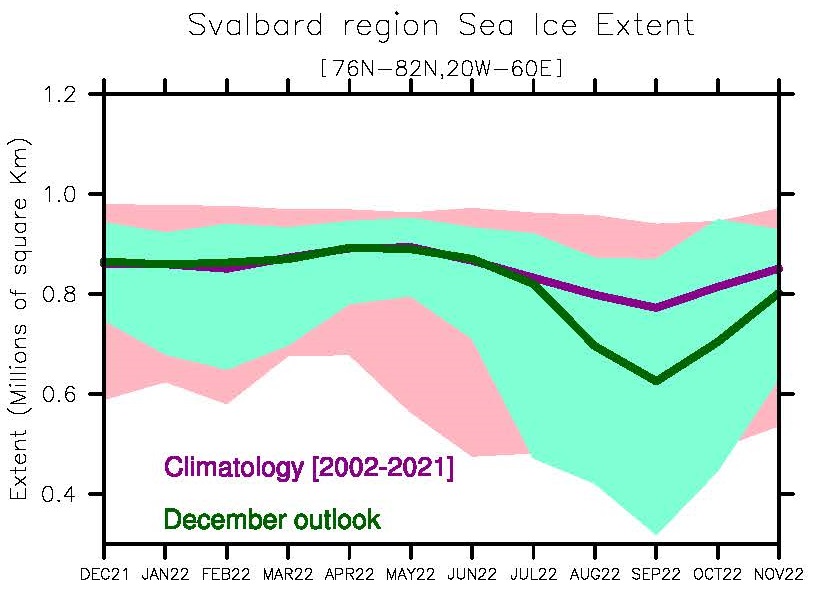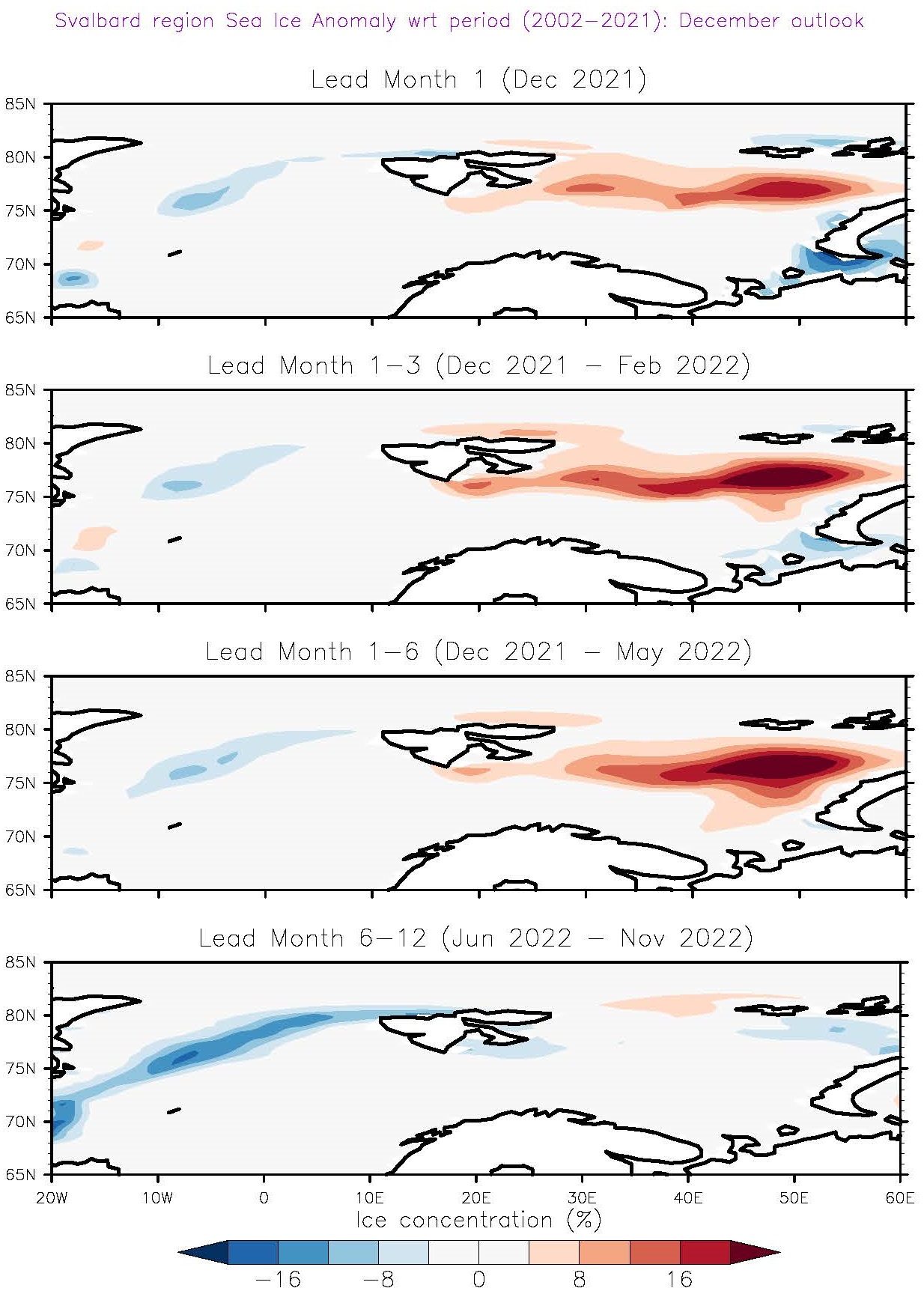Digital Arctic Shipping uses seasonal prediction in the Arctic from the Norwegian Prediction Model (NorCPM). NorCPM (Counillon et al. 2014) combines the Norwegian Earth System Model (NorESM, Bentsen et al. 2013) with an advanced flow-dependent Data Assimilation method (the EnKF, Evensen 2003). NERSC will provide sub-seasonal to seasonal predictions of sea ice for the Svalbard region. Chinese partner NMEFC will provide short-term sea ice forecasts (synoptic scale, several days), and Nansen Zhu will provide seasonal predictions of sea ice. Digital Arctic Shipping also uses daily short-term forecasts from the Copernicus Marine Environment Monitoring Service (CMEMS).
Daily short-term forecasts
The Copernicus Marine Environment Monitoring Service (CMEMS) is an operational service providing satellite and model products for different regions. For the Arctic, the TOPAZ4 model is run daily to provide 10 days of forecast (Fig.1) that are publicly available from the Arctic Marine Forecasting Centre (MFC). The TOPAZ4 models forecasts are provided in NetCDF format interpolated to a resolution of 12.5 km on a polar stereographic projection.
 |
Figure 1: CMEMS Sea ice thickness forecast from Topaz model, 12.5km daily forecast.
Seasonal to sub-seasonal forecasts
The predicted sea ice extent for the Svalbard region (Figure 2) shows a sea ice extent that is relatively comparable to the climatological mean estimate during winter time (with marginally larger sea ice extent in February). On the contrary, there is a pronounced anomaly of low sea ice extent in summer.
 |
Figure 2: Predicted Svalbard region sea ice extent December 2021 - November 2022.
Figure 3 shows the anomaly of sea ice concentration with respect to a climatology period of 2002-2021. We can expect that in the first 6 month (until May 2022), there will be more sea ice than usual in the Northeast Barents Sea, but less ice than usual at the ice edge in the Greenland Sea initially near the Kara gate. In the summertime, one should expect lower than usual sea ice concentrations in the Greenland Sea that typically relate to a reduced export of sea ice via the Fram Strait.
 |
Figure 3: Seasonal and subseasonal forecasts of sea ice anomalies in the Svalbard region 2022.
